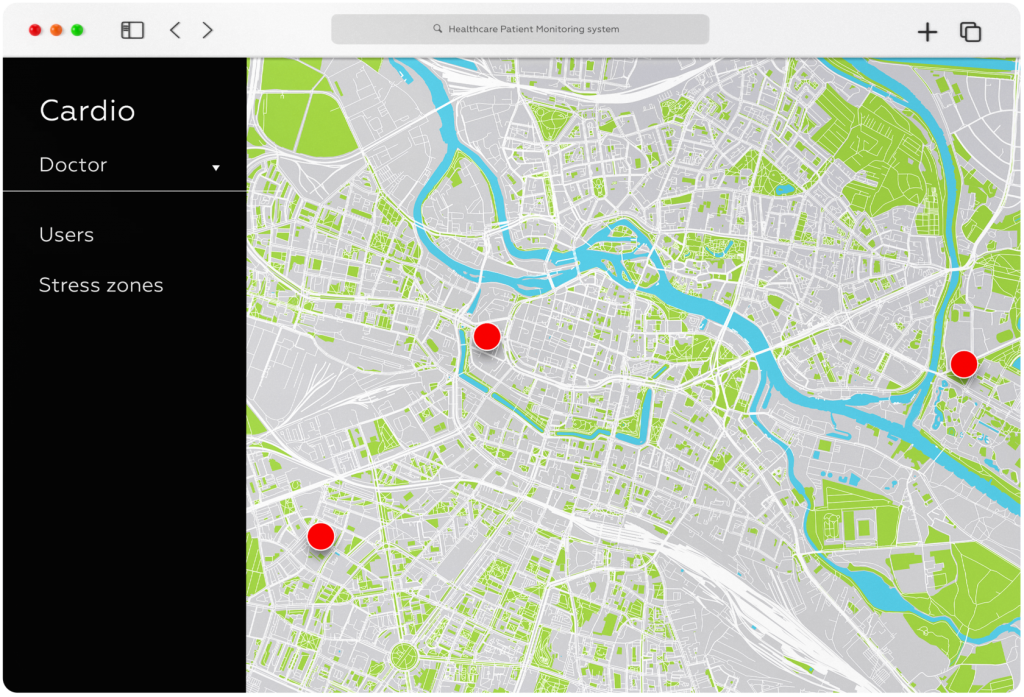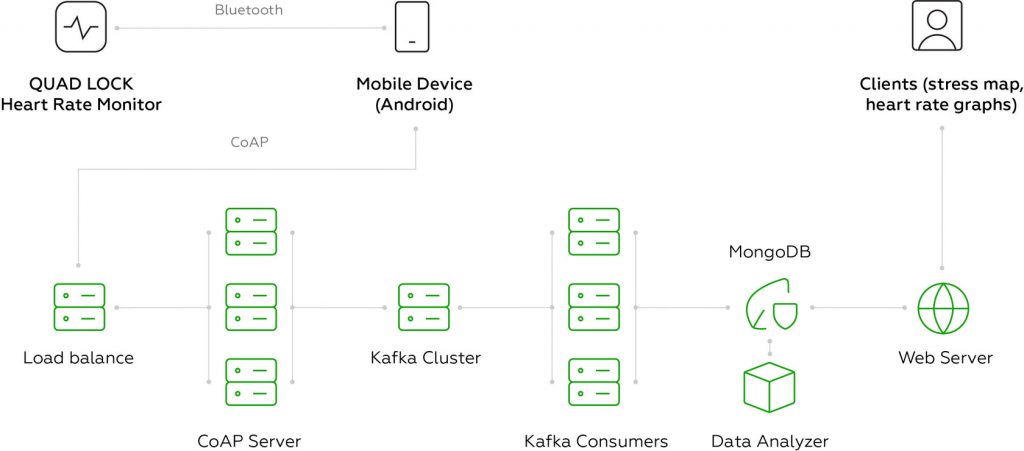Healthcare Patient Monitoring System
MVP: Internet of Things R&D Project
We built an MVP of an IoT-based healthcare patient monitoring system, which we tested as a road stress detection platform.
Challenge
In this R&D project, we wanted to exercise our IoT and machine learning expertise by developing a road stress detection system. The idea was to use IoT and machine learning to detect parts of the road network that cause the most stress for drivers, and use the solution’s architecture as a blueprint for future healthcare projects.
Solution
We assembled a small focus group of drivers, who also happened to be our colleagues. To measure stress levels, we equipped drivers with wristband heart-rate monitors, which are connected to a smartphone app via Bluetooth. Smartphones continuously collect data from heart-rate monitors and send it to the server via a Constrained Application Protocol (CoAP).
After reaching the MongoDB database, a machine learning model processes this data to detect sudden jumps in heart rate. To ensure that the system can scale on-demand for bigger projects and can efficiently process large amounts of data incoming from thousands of sensors, we used Apache Kafka.
By aligning heart rate deviations with GPS data, it becomes possible to detect which exact parts of the route cause the most stress for drivers. To visualize heart rate data and stress zones we built a web-based application.

Result
We built an MVP of a healthcare patient monitoring system, which we tested as a road stress detection platform. With an inadequately small sample size, we found out that drivers were stressing the most on a difficult intersection, and, quite amusingly, near office and home. Most importantly, the architecture of this IoT-based solution can serve as a blueprint for future healthcare systems that require remote patient monitoring at scale.
*Architecture

